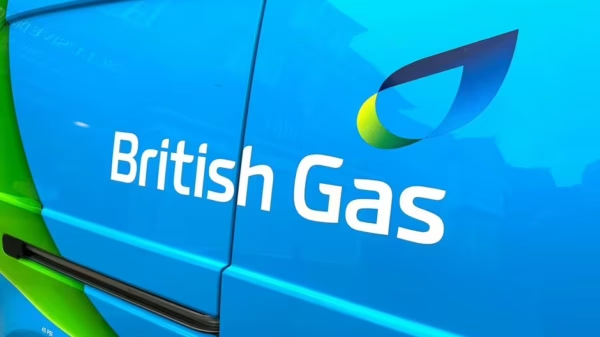BP Reports 48% Profit Drop Amid Strategy Shift
BP, one of the world’s largest oil and gas companies, recently reported a significant 48% decline in net profit for the quarter, a result of weaker refining and gas trading results. The company has faced increasing pressure from fluctuating energy prices and challenges within the global energy market. BP’s disappointing financial results also come amid a broader strategy shift aimed at streamlining its operations and focusing on its core business areas. In an effort to adapt to evolving market conditions and restructure its portfolio, BP also revealed plans to divest $20 billion in assets by 2027 and announced leadership changes in its strategy division.
Financial Struggles: Declining Profit and Weaker Refining Results
BP’s 48% decline in net profit can be largely attributed to two key factors: weaker performance in its refining sector and reduced revenues from gas trading. As oil prices remained volatile and demand fluctuated globally, BP’s refining margins were squeezed, impacting the company’s profitability. Refining, which involves converting crude oil into gasoline, diesel, and other products, has been one of BP’s key business segments, but recent challenges have made this sector less lucrative.
The decline in gas trading results is another significant factor in BP’s financial downturn. With global energy prices seeing dramatic shifts, BP’s gas trading arm faced difficulties in achieving consistent profitability. In addition to these sector-specific challenges, BP has also had to navigate broader economic uncertainties and regulatory pressures that have influenced its overall performance. As a result, the company is facing a period of restructuring and reevaluating its strategic direction.
Divestment Plans: $20 Billion in Asset Sales
As part of its strategy to adapt to changing market conditions, BP has announced plans to divest $20 billion worth of assets by 2027. This decision marks a significant shift in BP’s approach to its operations, as the company aims to streamline its portfolio and focus on more profitable and sustainable areas. The divestment will include a range of assets, from oil fields to non-core businesses, which BP believes no longer align with its long-term goals.
The decision to sell off assets is also a reflection of the growing emphasis on cleaner energy sources. BP, like many other major oil companies, has increasingly been under pressure to transition to more sustainable energy solutions. The company’s shift away from certain assets is part of its broader strategy to invest in renewable energy and low-carbon technologies, as it seeks to reduce its reliance on fossil fuels. By focusing on its core business areas and divesting non-essential assets, BP aims to improve its financial stability and position itself as a leader in the transition to a more sustainable energy future.
Leadership Changes and Strategic Focus
In addition to the divestment plans, BP announced a leadership change in its strategy division, signaling a shift in how the company approaches its long-term goals. The company appointed a new executive to oversee its strategic direction, emphasizing the need for innovation and agility in the face of a rapidly changing energy landscape. The leadership change comes as part of a broader effort to revitalize BP’s strategy and ensure that the company is well-positioned to capitalize on emerging opportunities in the clean energy sector.
BP’s focus on core business areas is expected to play a pivotal role in its recovery. The company is increasingly looking to invest in renewable energy technologies, including wind, solar, and bioenergy, as well as low-carbon technologies such as carbon capture and storage. By narrowing its focus and investing in these sectors, BP hopes to drive growth while reducing its exposure to the volatility of the fossil fuel market.
The Challenge of Transitioning to Renewable Energy
BP’s efforts to transition to renewable energy are part of a broader industry trend as major oil and gas companies recognize the need to adapt to the global shift toward clean energy. As the world moves toward decarbonization and stricter environmental regulations, companies like BP are under pressure to invest in sustainable energy solutions. The company’s push into renewables is a recognition of this shift and its commitment to aligning with the goals of the Paris Agreement.
However, transitioning from a traditional fossil fuel company to a leader in renewable energy is not without its challenges. BP will need to make significant investments in new technologies and infrastructure while navigating regulatory complexities and competition from renewable energy startups. The company’s ability to balance its legacy oil and gas operations with its growing renewable energy business will be critical to its success in the coming years.
Market Reactions and Investor Confidence
Following BP’s announcement of its profit decline and strategic changes, the company’s stock price took a hit, reflecting investor concerns about its short-term prospects. While the divestment plans and leadership changes are viewed as necessary steps to strengthen the company’s position in the long term, many investors are concerned about the immediate impact of the profit decline. The company’s focus on renewable energy is also seen as a long-term bet, which means that investors may not see the benefits of this strategy for several years.
Despite these short-term challenges, BP’s long-term strategy to transition to cleaner energy sources has garnered some investor confidence. Many analysts believe that BP’s efforts to diversify its portfolio and invest in renewables will position the company well for future growth. However, the path forward is fraught with uncertainty, and BP will need to navigate significant challenges as it works to reposition itself in a rapidly changing energy market.
The Broader Implications for the Energy Industry
BP’s profit drop and strategic shift reflect broader trends in the energy industry, as companies increasingly face pressure to adapt to a world that is moving away from fossil fuels. Major oil companies, including BP, Shell, and ExxonMobil, are all making efforts to diversify their portfolios and invest in renewable energy. The industry is undergoing a profound transformation, driven by technological advancements, regulatory changes, and a global commitment to combat climate change.
For BP, the challenge will be finding the right balance between its traditional oil and gas business and its growing renewable energy investments. The company’s ability to successfully execute its strategy will have important implications not only for its own future but also for the wider energy industry. BP’s actions will likely serve as a model for other companies as they navigate the complexities of transitioning to a more sustainable energy future.
Conclusion: Navigating the Future of Energy
BP’s recent announcement of a 48% decline in net profit and its strategic shift toward renewable energy highlights the challenges and opportunities facing major oil companies in today’s evolving energy landscape. The company’s decision to divest $20 billion in assets and focus on its core business areas is a response to the changing demands of the global energy market. As BP continues to restructure its operations and invest in cleaner energy technologies, it remains to be seen whether these efforts will lead to long-term growth and profitability.
While BP faces significant hurdles in the transition to renewable energy, its focus on sustainability and its strategic investments in low-carbon technologies position it as a leader in the energy industry’s ongoing transformation. As the company moves forward with its plans, it will need to overcome the challenges of market volatility and regulatory hurdles, but its commitment to adapting to the future of energy will be critical in shaping its success in the years ahead.



































